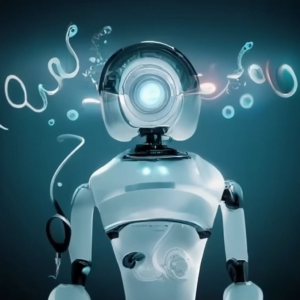
What Are AI Writing Detectors and How Do They Work?
You know those little “I’m not a robot” checkboxes you have to click sometimes? Turns out, robots are getting pretty good at figuring out if someone – or something – is real or not. Artificial intelligence has come a long way in sniffing out fake online content, from news articles to social media posts and even comments.
In this post, we’ll break down how these AI detectors work their magic, looking at some key concepts like natural language processing and statistical models. Stick around to learn more about the nuts and bolts behind these high-tech BS detectors! While we won’t go into how to get around them, understanding how they function gives us insight into the power of AI.

Looking for how to beat AI detectors? Check out our blog post on that here: How to Humanize AI Content: Practical Tips for Success
5 Key Indicators AI Detectors Look for in Text
An AI writing detector or AI checker is an automated system that analyzes writing samples to determine if they were created by humans or artificial intelligence. They work by detecting subtle patterns in language that differentiate human and AI-generated content.

AI detectors examine things like sentence structure, word choice, coherence, and readability. Human writers intuitively craft complex yet coherent thoughts, use creative metaphors and analogies, employ rhetorical devices, and vary their sentence lengths for effect. AI often struggles with these elements, producing stiff, simplistic language with repetitive sentence patterns. Here are five key indicators that AI detectors look for in text:
1. Sentence Structure
AI detectors for writing scrutinize sentence structure. AI-generated text typically has very simple sentences of similar length and syntax. It lacks the variety and complexity of human writing. Machines struggle with transitioning between short, medium, and long sentences naturally. AI content detectors can pick up on these uncreative sentence structures easily.


2. Coherence and Flow
Does your text have a clear introduction, body, and conclusion? An AI detector will check if ideas flow logically from one to the next with natural transitions. AI-generated text can seem choppy, with concepts that don’t quite mesh together. It may abruptly change topics or repeat ideas. Creating a coherent flow and narrative is still a challenge for AI.
3. Spotting Unnatural Language
An AI detector can also look for language that seems “off” or unnatural. One of the first things they check is word choice and language. Machines often struggle with using natural language and may repeat the same words or phrases too frequently.
They also tend to use very common words and lack creativity or emotion in their writing. Things like incorrect word usage, irrelevant or illogical connections between ideas, or emotional language mismatched with the subject matter are easy clues for an AI detector. AI writers have a hard time with nuance and subtext, so their writing can come across as superficial or forced.


4. Comparing to Known Samples
Some detectors utilize machine learning to compare new writing samples to a large database of content known to be human- or AI-generated. By analyzing patterns across thousands of these samples, the system learns the subtle differences in style, syntax, and semantics to determine the likelihood that a new piece of writing came from a human or an AI.
5. Facts and Claims
AI writing detectors verify any facts, statistics, quotes, or claims in the text. If something sounds implausible or is unattributed, it could indicate AI-generated content. Machines have access only to the data they’ve been fed, so they can’t generate truly original ideas or make highly creative connections that haven’t been seen before. They may make exaggerated or misleading claims which will often set off an AI detector.
Different Types of AI Detectors

AI writing detectors analyze content to determine if it was written by a human or machine. There are a few main types used by companies to detect AI-generated text.
Limitations of AI Writing Detection

While detectors are continuously advancing to address these challenges, AI-generated content and the systems that produce it are also constantly evolving in a cycle of competition. For now, human judgment and an understanding of the fundamentals of AI writing remain important tools for discernment.
Conclusion

With AI getting more advanced, detecting AI-generated text will only become more challenging. Combining multiple detection methods and continually improving them based on the latest AI capabilities may be the best approach. But as AI text generation continues to become more sophisticated, even the most advanced detectors could eventually be fooled.
With practice, AI will continue improving at generating content that seems human. But for now, human judgment and AI writing detectors working together offer the best defense against AI-generated text pollution. With time and feedback, AI will learn what it takes to pass as a human—but humans will also get better at spotting the signs of machine interference. The battle against artificial and manipulated media is just beginning.
AI Content Disclosure
The majority of this content was written with Byword_AI and edited by humans.




